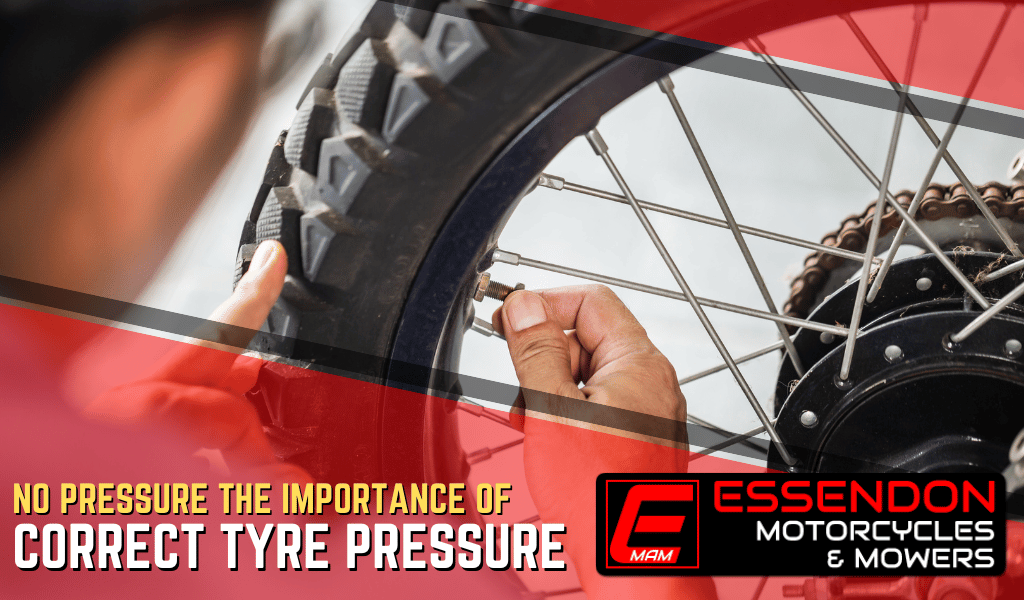No Pressure – The Importance of Correct Tyre Pressure!
The must-read advice you need to take two minutes to know before setting out on the road.
While there isn’t a single safety-critical component on a modern motorcycle we feel we couldn’t do without, tyres are always the first ones to come to mind. The choice of brands is as big as it’s always been, with the range offered by the manufacturers being specialised enough to offer the very best for everything from a scooter to the Hyper Sports class.
With years of development work going into motorcycle tyres, and companies like Michelin, Dunlop, Pirelli and Bridgestone all working at the very top of the sport with some of the most talented riders on the planet, the research and development work they do results in some of the most wonderful technology being made available to us to ride on our machines.
When we ride, all of our kit needs to be ‘fit for purpose’. You wouldn’t wear a set of leathers that were too big and expect them to protect you in an ‘off’ – no matter how good they were. It’s the same with our bike’s rubber. Without being inflated properly they simply won’t do what they’re supposed to do.
Thriving under the pressure
The only input that we have to do is to monitor the condition of the tyre and maintain its pressure. Regardless of whether you’re a Moto GP star or just riding a Café Racer to the Sunday morning meet-up, your tyres are what’s called a ‘dynamic component’ on your bike. All that power under acceleration is delivered to the very small contact patch on the rear tyre. With most bikes in the one litre plus sports bike segment capable of reaching 160 kilometres an hour in under three seconds, this asks an awful lot from that little patch of rubber on the crown of your rear tyre.
Braking bad
Braking forces also put huge amounts of pressure (no pun intended) on our tyres. With deceleration tipping the balance onto the front and braking compressing suspension, the front in particular has its work cut out for it.
As with cornering, the more aggressively we brake, the harder the tyre has to work. In order to make sure all the good work the developers have done doesn’t go to waste, it’s critical that we maintain the correct pressures.
Feeling deflated
All tyres, even brand new ones, lose pressure over time. Checking them regularly, while cold, once every two weeks on a frequently ridden bike, should be enough.
This ensures that they will perform as intended. If a bike is ridden with too little air, the sidewall on the tyre will become unstable and as a result the bike’s handling becomes unpredictable. The internals of the tyre may also be damaged as a result, and even when the pressures have been corrected, this damage may lead to a critical failure. At the very least, running on underinflated tyres can cause some very expensive damage to wheels.
Full of hot air
Over-inflating tyres causes a different set of problems. The ride can become very harsh, rather like setting the suspension too hard. As the ‘flex’ is removed from the crown and shoulder of the tyre, the contact patch decreases and grip is reduced. This causes rear wheel spin under acceleration and a potentially catastrophic loss of grip, particularly under braking.
Setting the correct pressure means getting longer life from your tyres, a more comfortable ride, all the grip you should ever need, and a contact patch that allows your bike to perform as it should, so you can go out and experience the joys of taking to the road.
Always use the pressures as recommended by the motorcycle manufacturer when riding on the original tyres.
When replacing them, particularly with different brands, make sure to check the recommendations of the tyre manufacturer, as they may not be the same, as ‘time and progress wait for no man’.
To cap it all…
One final thing is that we should always fit a valve cap when we’re done. This seemingly inconsequential piece of plastic will provide a seal against the accelerated deflation caused by the centrifugal force of the wheel as it spins.
Do you have any stories about a time you used the wrong tyre pressure? What tyre pressure do you use if not the manufacturer’s recommendations? Leave your answer in the comments section.
Download our great pre-ride POWDER checklist so that you can make sure your motorbike is as ready to take to the road as you are!
To find out more about Essendon Motorcycles & Mowers and our services please contact us directly on (03) 9351 0055 or visit our website

